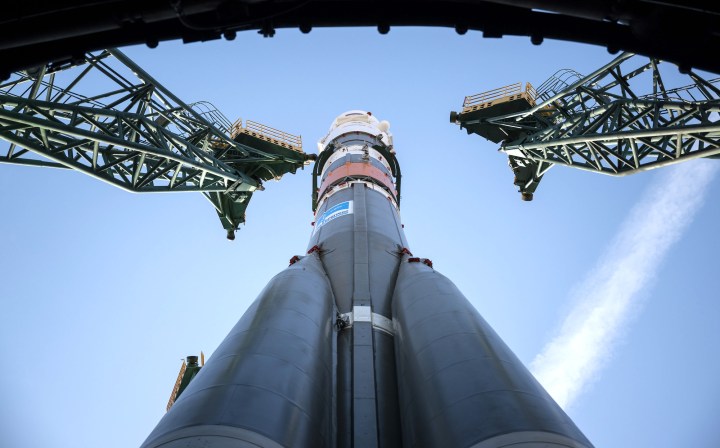
The latest launch of Russia’s usually reliable Soyuz rocket was called off just seconds before liftoff on Thursday, with the three crewmembers — including one NASA astronaut — now waiting for their next opportunity to fly to the International Space Station (ISS).
A live stream of the incident at the Baikonur Cosmodrome in Kazakhstan captured the moment when the countdown was halted just 20 seconds before Soyuz was supposed to fire up its engines.
Today's Soyuz launch was aborted at the 20-second mark. The spacecraft and crew remain safe. Teams at Baikonur will provide updates as they make assessments. pic.twitter.com/xPBtWtDDsh
— NASA (@NASA) March 21, 2024
In an update on its website, NASA said the launch had been “automatically scrubbed by ground support equipment due to [a] low voltage reading in the Soyuz rocket electrical system.”
The next available launch opportunity is on Saturday, March 23, pending the completion of a State Commission review, NASA said. Flying to the ISS inside the MS-25 spacecraft atop the Soyuz rocket will be NASA astronaut Tracy C. Dyson, Russian cosmonaut Oleg Novitskiy, and Belarusian Marina Vasilevskaya. When they eventually arrive at the ISS, they’ll spend about six months living and working alongside colleagues already there.
Meanwhile, a SpaceX cargo mission for the ISS got underway from the Kennedy Space Center as planned on Thursday, sending vital supplies and science experiments to the orbital outpost.
Russia’s Soyuz rockets have been blasting to space since 1966, and it’s rare for this workhorse vehicle to experience a late abort like this.
One of the most dramatic incidents involving the Soyuz spaceflight system in recent years occurred in 2018 when the ISS-bound MS-10 mission failed to reach orbit after a problem developed with the main booster early on in the flight. The two-person crew was saved by the emergency launch escape system, which pulled the Soyuz spacecraft away from the malfunctioning rocket before it descended to Earth with the assistance of parachutes as if returning from a regular mission.
Speaking about the incident, NASA astronaut Nick Hague, who was on his first flight to space, said: “It was right after the first staging when the booster started to separate. Inside, it went from normal to something-was-wrong pretty quick. The automated system pulled us away from the rocket so fast, and so the first thing I really noticed was being shaken fairly violently side to side as the safety system pulled us away from the rocket, and then there was an alarm inside the capsule … the mission changed to getting back down on the ground as safely as we could.”
Hague added: “I imagined that my first trip to outer space was going to be a memorable one; I didn’t expect it to be quite this memorable.”
Editors' Recommendations
- NASA gives Starliner’s first crewed launch the go-ahead
- Junk from the ISS fell on a house in the U.S., NASA confirms
- SpaceX all set for a record-breaking rocket launch on Friday
- Russian Soyuz on its way to ISS after being delayed due to electrical issue
- Around-the-clock 4K Earth imagery to be streamed from ISS


